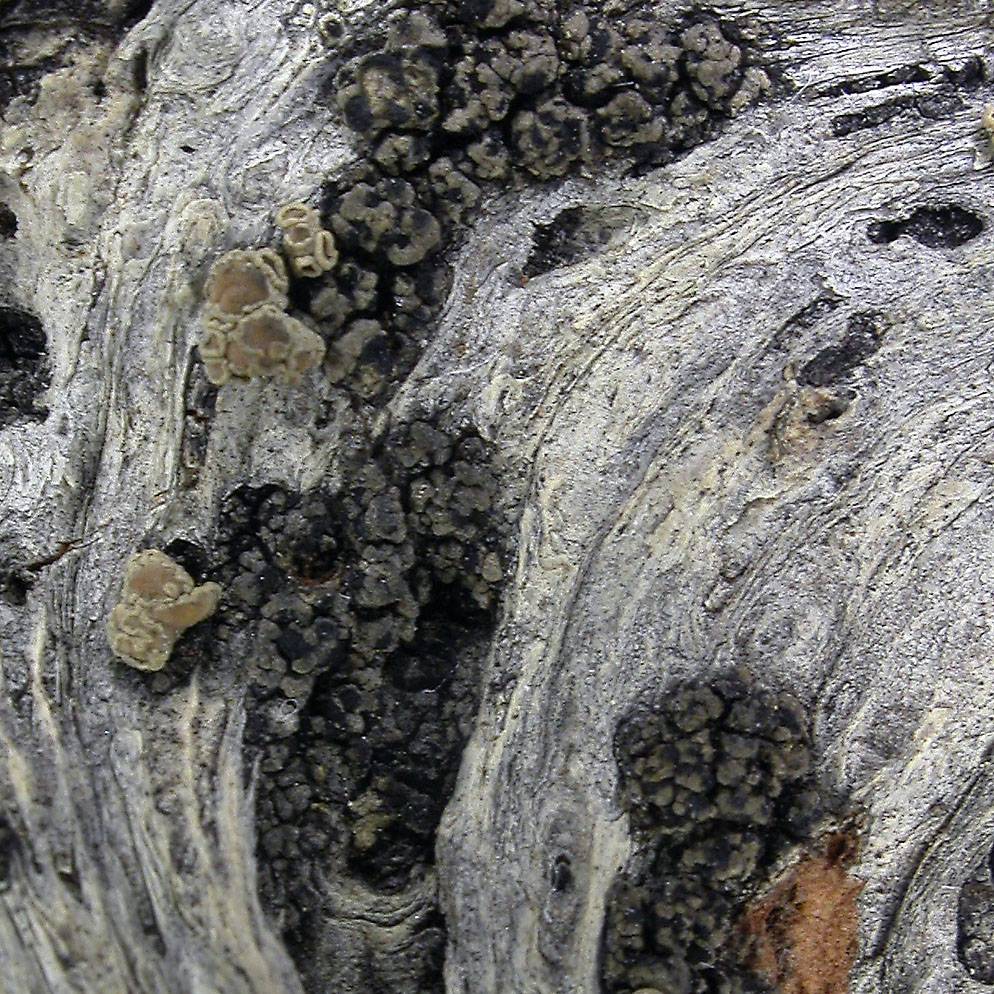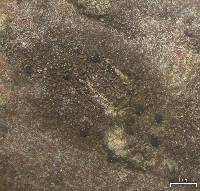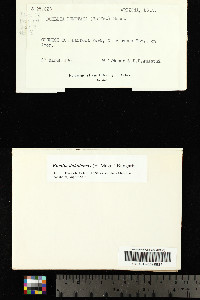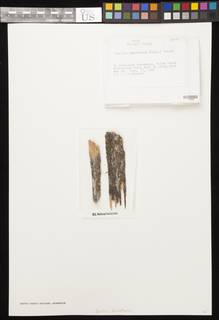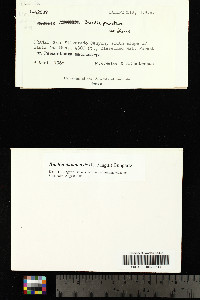
Consortium of Lichen Herbaria
- building a Global Consortium of Bryophytes and Lichens as keystones of cryptobiotic communities -
- Home
- Search
- Images
- Species Checklists
- US States: O-Z >
- US National Parks
- Central America
- South America
- US National Parks
- Southern Subpolar Region
|
|
|
|
Family: Caliciaceae
|
Nash, T.H., Ryan, B.D., Gries, C., Bungartz, F., (eds.) 2007. Lichen Flora of the Greater Sonoran Desert Region. Vol 3. Thallus: crustose, areolate becoming irregularly bullatesubsquamulose, thin to considerably thickened, ±continuous or becoming dispersed; prothallus: absent surface: deep brown, olive brown to dark gray, rarely pale brown or pale gray, dull or ±shiny, smooth to slightly roughened, epruinose, phenocorticate, esorediate medulla: white, lacking calcium oxalate (H2SO4-) Apothecia: similar to the mamillana-type, i.e., initially lecanorine, but soon becoming lecideine; (0.2-)0.3-0.4(-0.5) mm in diam., soon adnate to sessile margin: brownish, blackening with maturity, thickening with maturity, inconspicuous in immature apothecia, but soon becoming distinct, initially emerging from the thallus with a ±well developed pseudothalline margin that becomes excluded with maturity disc: black, epruinose, plane, sometimes ±convex proper exciple: first thin, indistinct but soon thickening, i.e., inner excipular hyphae distinct, hyaline but becoming pigmented with age, prosoplectenchymatous (textura oblita), extending from the deep brown, pale yellow or rarely hyaline hypothecium (leptoclinoides-brown, textura intricata), outer excipular hyphae short-celled, cells angular, ±swollen (textura angularis) and ±carbonized with various amounts of a brown pigment (cf. elachista-brown, HNO3-) epihymenium: brown, pigmentation continuous with the outer exciple (HNO3-) hymenium: hyaline, not inspersed with oil droplets; paraphyses: simple to moderately branched, apically swollen, with a brown pigment cap (cf. elachista-brown) asci: clavate, Bacidia-type, 8-spored ascospores: soon brown, 1-septate, broadly ellipsoid, i.e., becoming distinctly constricted with age, with obtuse ends, not curved, (10.5-)10.6-[11.9]-13.1(-14.5) x (7-)7.6-[8.1]-8.6(-9) µm (n=25); proper septum: narrow, not thickening during spore ontogeny, but generally very thick-walled (Buelliatype); ornamentation: microrugulate (visible without DIC) Pycnidia: rare, urceolate to globose, unilocular, at maturity lined with short barely branched conidiophores; ontogeny similar to the Roccella-type conidiogenous cells: terminal, not intercalary (conidiophore-type III) conidia: filiform, 14.5-20 x 0.5-1 µm (n=30) Spot tests: all negative (K-, P-, C-, KC-, CK-) fluorescence: UV- (dark) iodine reaction: medulla non-amyloid Secondary metabolites: none detected or traces of atranorin (J. A. Elix, HPLC). Substrate and ecology: on a wide variety of bark, either smooth like Abies or Acer, but also on roughened bark of Quercus or Pseudotsuga, also on wood (Sheard and May 1997); generally a species of high altitudes and in the Sonoran Region only found in montane to subalpine forests (>1000 m) World distribution: common throughout northern and northeastern forests of North America (U.S.A., Canada), rarely also in Mexico Sonoran distribution: rare throughout the Sonoran Region and very few specimens have been collected in Arizona, southern California, and Baja California Sur (Guadalupe Mountains) at an altitude of 1200 m. Notes: Buellia dakotensis has often been misidentified as B. punctata or a corticolous form of B. badia (i.e., B. turgescens sensu Imshaug 1951). The most distinctive characters are found in the spores that are very thick-walled, become conspicuously constricted with age, and are usually microrugulate. Buellia dakotensis was originally described in Rinodina, because of its thalline margin that often, but not always, surrounds young apothecia. This margin is in most specimens rapidly replaced by a lecideine margin. The anatomy of the fully developed proper exciple is similar to the dispersa-type, and thus differs from mature apothecia of B. mamillana. Because its ontogeny is identical with B. mamillana, B. dakotensis is assigned the same exciple-type. Two other species also follow a mamillana-type ontogeny: B. fouquieriensis and B. endoferruginea. Buellia fouquieriensis is very similar to B. dakotensis and possibly related. Like the thalline margin, the presence of a pale yellow or even hyaline hypothecium in some specimens would support the inclusion of B. dakotensis in Rinodina, but the asci clearly belong to the Bacidia-type. Based on the filiform conidia, Sheard and May (1997) included the species within Amandinea, a problematic genus of not necessarily closely related species (Bungartz et al. 2004b). If pycnidia can be found, the species can easily be distinguished from B. badia, which has bacilliform conidia. Conidia of B. dakotensis are generally longer than those of B. punctata, but spore characters are generally more reliable in distinguishing the two species. On smooth bark, the areolate thalli remain thin, but, on rough bark, they often strongly inflate and become bullate to very irregularly subsquamulose. Sheard and May (1997) report blastidiate specimens, but no Sonoran material with blastidia is currently known. |
Powered by Symbiota

